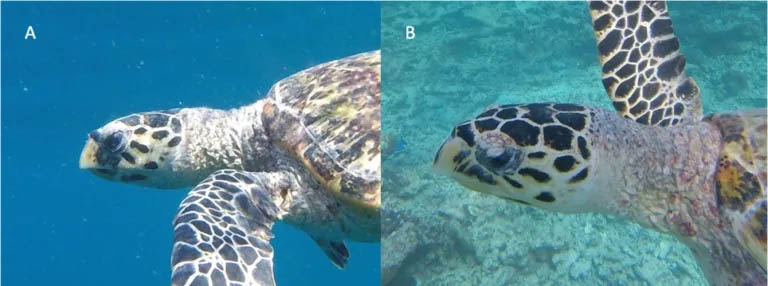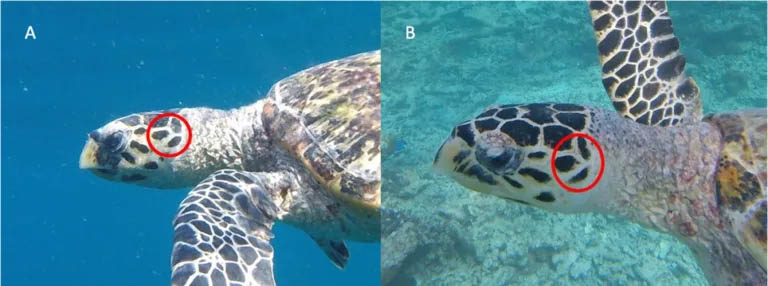We find it quite easy to recognize people, don’t we? Colour of the hair, colour of the eyes, height, expressions. But what if we want to recognize individuals in the marine environment? Imagine you’re swimming every day on the same reef, and you see a turtle every time you go, how can you know that turtle is the same one is coming to visit you, or it is always a different one? How do you know that the dolphin you see every day from the boat, is going around with the same gang or not (basically, in science, if that pod of dolphins is local or there are different ones moving around competing and looking for food)?
As with human beings that have a fingerprint unique for each individual, also marine animals have a pattern with distinctive characteristics that can help us to recognize the individuals and therefore allow the study of the population of these organisms.
Here, we’re going through three animals that I used to identify through photo-identification when I worked in the Maldives: turtles, dolphins, mantas. Photo-ID is a non-invasive technique that consists of making pictures of the interested part of the organism and analyzing it later in front of a screen, without touching, or even disturbing, any organisms.
Each sea turtle has its own unique arrangement of facial scales. Left and right sides are different, so it is necessary to be careful and not confuse them!
However, there are some doubts about the stability of those patterns over long periods, since sea turtles are migratory and long-lived individuals and scientists wondered if these facial scales were going to change during the life of the sea turtle or not. Results of a study about the stability of facial scale patterns over time, together with previous findings on the uniqueness of patterns between individual green turtles, validate the method of using facial scale patterns as a long-term identification tool for green turtles (Carpentier et al., 2016).
Another animal that has a unique pattern is the manta ray. Every single individual has a unique pattern of black spots on the belly (ventral surface) that stay untouched for their whole life. Reef manta rays have these spots also between the opening gills, while oceanic manta rays don’t. So, it’s also a different way to recognize not only the individuals but the species!
Huge databases in many parts of the world contain millions of pictures of the lower part of the manta body allow us to study the population, the behavior and the migration of these amazing gentle giants. One of the biggest research team that is taking care of monitoring different populations of manta rays in the world is Manta Trust, and if you see a manta and make picture of the ventral surface you can contribute to their research.
For more info: https://www.mantatrust.org/idthemanta
Last but not least, cetaceans can also be monitored through photo-ID.
Here we talk about dolphins. The identification of dolphins occurs through the characteristics of their dorsal fins, the main point of interaction with conspecifics. Scars, notches and pigmentation can help the scientists to identify the same dorsal fin through time. The study of photo ID enables researchers to collect information about the distribution of the species, whilst estimates about the age and population size can be made.
Differently from sea turtle and manta rays, some characteristics of the dorsal fins can change, since more scars can be found as the individual gets older. That’s why it is important to be constant in the study of the population and be able to note all the changes in each individual.
Carpentier, A. S., Jean, C., Barret, M., Chassagneux, A., & Ciccione, S. (2016). Stability of facial scale patterns on green sea turtles Chelonia mydas over time: a validation for the use of a photo-identification method. Journal of Experimental Marine Biology and Ecology, 476, 15-21.






